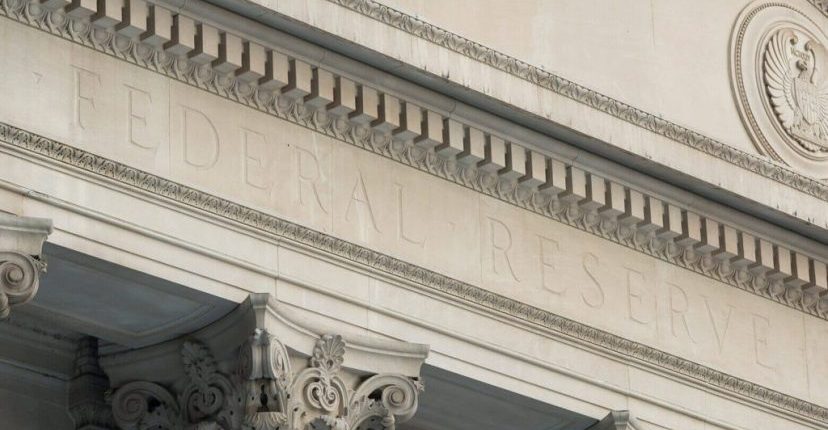Liz Looks at: The Fed’s November Statement
Slowing Their Roll
In a highly anticipated, minimally surprising statement, The Federal Reserve announced that they will reduce their purchases of Treasury and mortgage-backed securities by $15 billion per month beginning in November.
That shocked no one. What many were looking for was a signal regarding rate hikes, after the market had pulled forward its expectation of hikes quite aggressively in the last two weeks (increased expectation of a hike in summer 2022, and a second or possibly third hike in fall/winter).
In my opinion, this Fed values three things: flexibility, predictability, and patience. Here is my take on their statement broken down into those three categories.
Flexibility
Despite outlining a prescriptive pace of tapering for November and December, the Fed left itself an option to adjust the pace as they evaluate the economic environment down the road. It also signaled that rate hikes depend on different tests and require more careful observation of the labor market and inflation levels.
Translation: The Fed has flexibility to change the pace of tapering and to watch the indicators it deems appropriate, not those the market deems appropriate.
My take: the tapering of purchases is the only tool the Fed has in the near-to-medium term and they will exercise the option to increase the pace of tapering in 2022. Supply-side constraints are expected to continue well into 2022, which means inflationary pressure will also continue. In order to take initial steps toward controlling that excess inflation, the taper timeline will need to move faster.
On the topic of indicators, the Fed has outlined its objective as “maximum employment,” which they view as a combination of the number of people employed, labor force participation, and job openings, among other things. Meaning, no matter the official unemployment rate or how the market wants to read it, don’t invest based on the level of U-3 unemployment because they’re watching other things.
Predictability
This Fed hates surprises. Jerome Powell has spent considerable energy on clearly telegraphing the Fed’s moves long before they actually act. The announcement of this tapering program is a perfect example of their ability to signal markets properly and minimize surprises. The issue of rate hikes will be their next mountain to climb.
My take: the market got ahead of itself expecting a first hike in summer 2022 and the Fed will attempt to move that expectation back in coming statements. It’s far too early to telegraph rate liftoff and inflation stickiness is far too uncertain to start broaching this subject. I see rate liftoff in September 2022.
Patience
Lastly, this Fed values patience. Not just in the conventional sense of moving at a slow, measured pace (although that, too), but in the sense of being patient after making shifts in policy to wait for the effects.
My take: this is the first shift in policy post-pandemic, and the Fed will want to wait for it to marinate before moving on to any “new” policy changes. Namely, rate hikes. As such, we are unlikely to get a clear signal on rate movements before tapering has been in place for 2-3 months. Jerome Powell has stressed the lag between monetary policy decisions and economic effects before, and I would expect him to start doing so again.
The Important Part: The Train Has Left the Station
If this station was endless liquidity, the train has finally left and the world didn’t end. Phew. The Fed will take each new station one at a time and narrate the scenery well along the way. Our job as market participants is to listen.
Please understand that this information provided is general in nature and shouldn’t be construed as a recommendation or solicitation of any products offered by SoFi’s affiliates and subsidiaries. In addition, this information is by no means meant to provide investment or financial advice, nor is it intended to serve as the basis for any investment decision or recommendation to buy or sell any asset. Keep in mind that investing involves risk, and past performance of an asset never guarantees future results or returns. It’s important for investors to consider their specific financial needs, goals, and risk profile before making an investment decision.
The information and analysis provided through hyperlinks to third party websites, while believed to be accurate, cannot be guaranteed by SoFi. These links are provided for informational purposes and should not be viewed as an endorsement. No brands or products mentioned are affiliated with SoFi, nor do they endorse or sponsor this content.
Communication of SoFi Wealth LLC an SEC Registered Investment Adviser
SoFi isn’t recommending and is not affiliated with the brands or companies displayed. Brands displayed neither endorse or sponsor this article. Third party trademarks and service marks referenced are property of their respective owners.
Communication of SoFi Wealth LLC an SEC Registered Investment Adviser. Information about SoFi Wealth’s advisory operations, services, and fees is set forth in SoFi Wealth’s current Form ADV Part 2 (Brochure), a copy of which is available upon request and at www.adviserinfo.sec.gov. Liz Young Thomas is a Registered Representative of SoFi Securities and Investment Advisor Representative of SoFi Wealth. Her ADV 2B is available at www.sofi.com/legal/adv.
SOSS21110401




